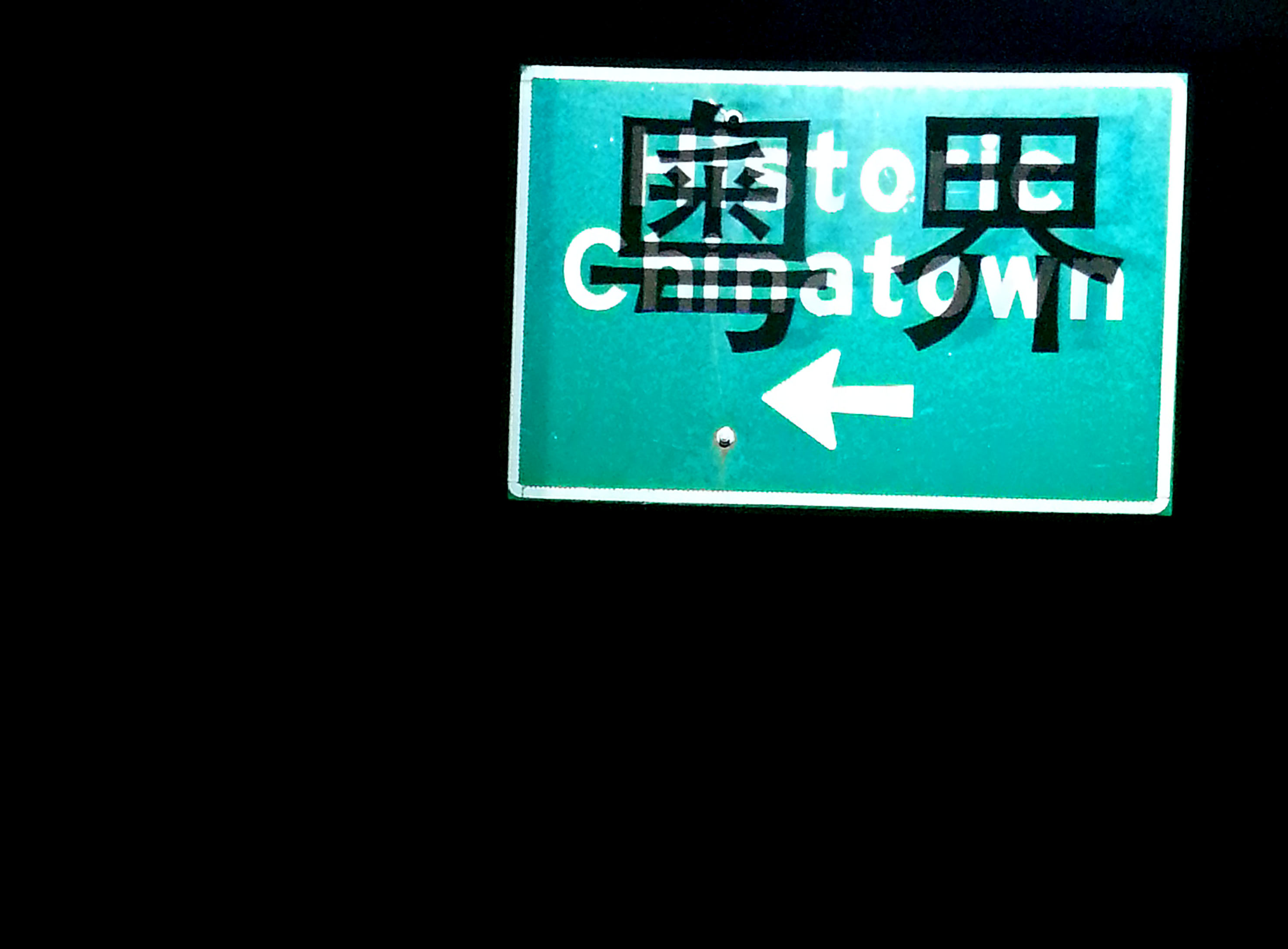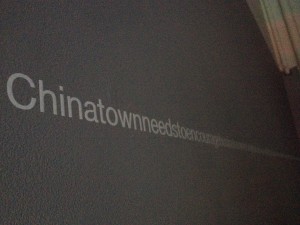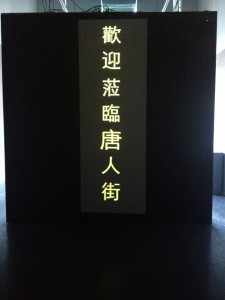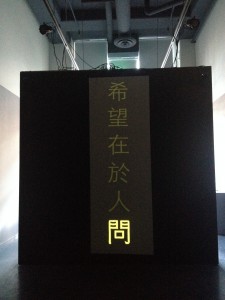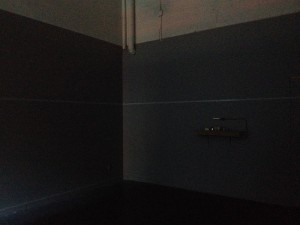Language Politics in Transgressions/ Cantosphere
A first time visitor to Centre A, the contemporary art gallery located in historic Chinatown welcomes visitors as they enter with a typical green city sign displaying ‘Historic Chinatown’ in English, then overlaying a projection of Chinese text. Already, the issue of language contextualized the visit.
At the entrance also sits a mahjong table, an activity that brings friends and family together to trade stories and enjoy the company of each other, encouraging visitors to engage with the exhibit.
Language politics continues to be a large thematic focus of the exhibit with both written English and Chinese displayed: which part of the exhibit do viewers tend to engage with first?
The English text wrapped around the exhibit walls is taken from the City of Vancouver’s Chinatown’s Economic Revitalization Strategy from June 2012. The text contains suggestions for how the neighbourhood might proceed in achieving revitalization by encouraging “business owners to greet customers with friendly and welcoming attitudes” or by attracting “the growing genre of new technology based on businesses and start ups that find cultural and even edgy neighbourhoods appealing”. Notably, the artists have chosen to take specific portions of the Revitalization Strategy and reconstruct them in a different order. When reading the selected quotes, I sensed a twinge of irony that may not have been intentionally constructed by the artists. There is an apparent disconnect in the language used between those who created the strategy and the language used by those the strategy is meant to address, a largely Chinese- speaking community. The recommendations are of a more modern nature to be applied to a more traditional community, even reflected in the language used. This poses the question of how effective the strategic plan was/ is?
Even as a native English speaker, the English text on the wall was challenging to read because of its lack of punctuation. As a single run-on sentence, the string of forced upon words are meant to have meaning but only after real concentrated efforts to parse where phrases might begin or end.
TRANSGRESSION/ CANTOSPHERE further complicates notions of language within the Chinese culture, the main contention focusing on the rise of more Mandarin-speaking folks in Chinatown that shifts from a traditionally Cantonese community. The decline of a language by extension signals the decline of a culture. TRANSGRESSION/CANTOSPHERE acknowledges this change and the exhibit aims to celebrate a Cantonese culture that is battling for its resiliency within a Chinese community by creating a physical space where the culture can physically exist.
A flickering panel of projected phrases and puns in written Chinese are read out by a woman Cantonese speaker. No real explanation for these phrases is provided unless you are lucky enough to find an exhibit pamphlet. Just like the English portion of the installation, the projected text is to be forcibly accepted whether one understand it or not: the experience is different for a Mandarin speaker, a Cantonese-speaker, or someone not familiar with Chinese at all. Language is a social construct that has different interpretations based on the individual.
Ultimately, Centre A’s Transgression/ Cantosphere explores of language and by extension identity and culture within the context of a transnational and modernizing world in the heart of Chinatown’s changing community.
